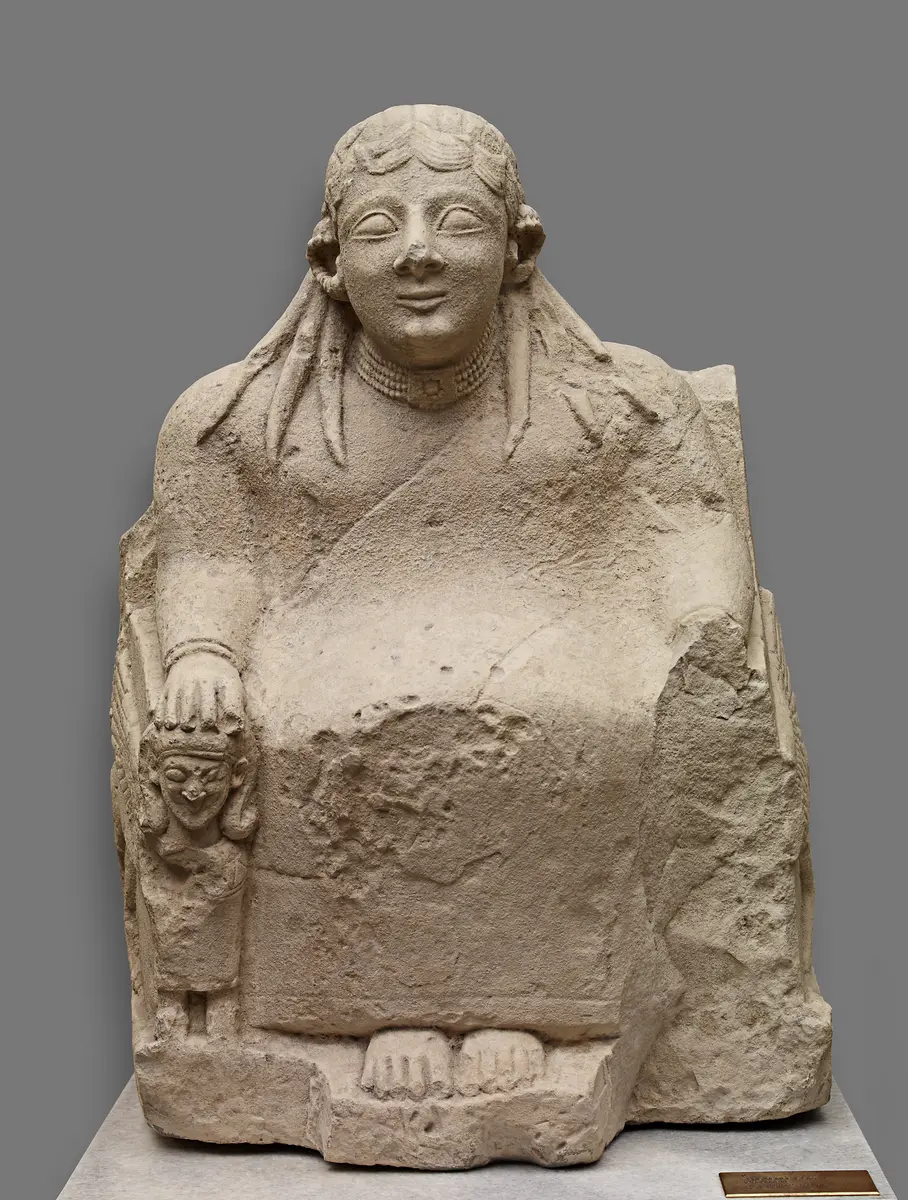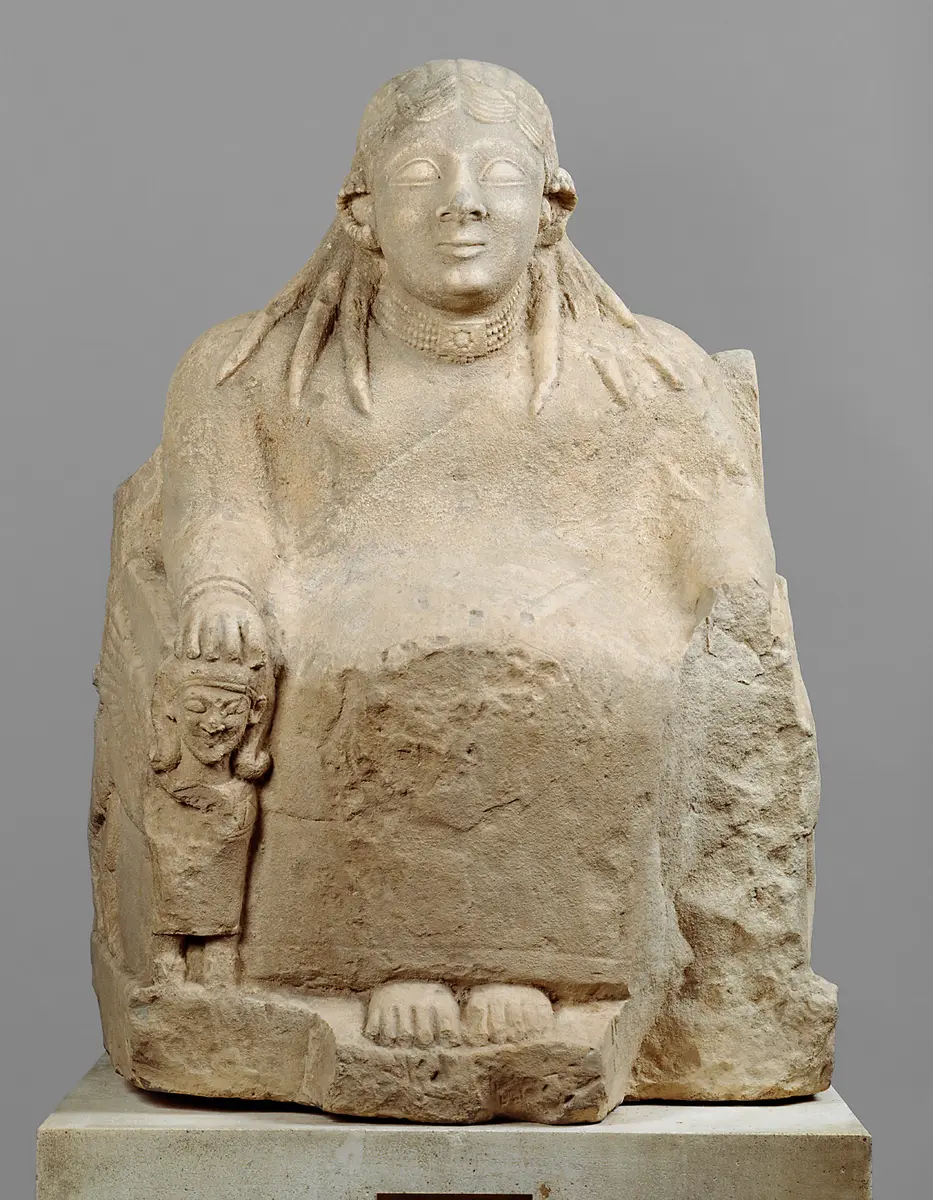Thronende Göttin (Astarte?)
Im Laufe des 9. Jahrhunderts v. Chr. wurde Kition von phönizischen Einwanderern besiedelt, die Astarte, der Göttin der Fruchtbarkeit, der Liebe und des Todes, ein Heiligtum errichteten. In der unterlebensgroßen Kalksteinstatue einer sitzenden Frau ist vermutlich das Kultbild dieser orientalischen Gottheit erhalten. Die Armlehnen des Thronsessels werden von geflügelten Sphingen, den Begleitern der Astarte, getragen, die in ihren Vorderteilen als bekleidete männliche Vollfiguren ausgebildet sind. Die Göttin, mit Spirallocken und in einem langen Gewand, ist reich geschmückt: Die schwere Halskette und der kunstvoll gebildete Ohrschmuck nach dem Vorbild von geschmiedeten Anhängern sind für Zypern charakteristisch. Durch den blockförmigen Aufbau der Figur, den durch die Schematisierung der Körperformen idolartigen Charakter und die charakteristische Kopfgestaltung, die sich an archaisch-ostgriechische Vorbilder anlehnt, verkörpert die thronende Göttin den eigenständigen zyprischen Mischstil, der sich im 6. Jahrhundert v. Chr. unter ägyptischen, orientalischen und griechischen Einflüssen entwickelte.
A. Bernhard-Walcher u.a., Die Sammlung zyprischer Antiken im KHM. Sammlungskataloge des KHM Bd. 2, Wien 1999 (
A. Bernhard-Walcher)
Title:
Thronende Göttin (Astarte?)
Time:
1. Hälfte 6. Jh. v. Chr.
Object Name:
Statuette
Culture:
Zyprisch
:
Zypern
Material/technology:
Kalkstein
Dimensions:
H. 81 cm, B. 54 cm, T. 43 cm
Copyright:
Kunsthistorisches Museum Wien, Antikensammlung
Invs.:
Antikensammlung, I 1548
Provenance:
Popper von Podhragy, Leopold, Wien; früher Slg. Graf Anton von Prokesch-Osten; 1936 Kauf



